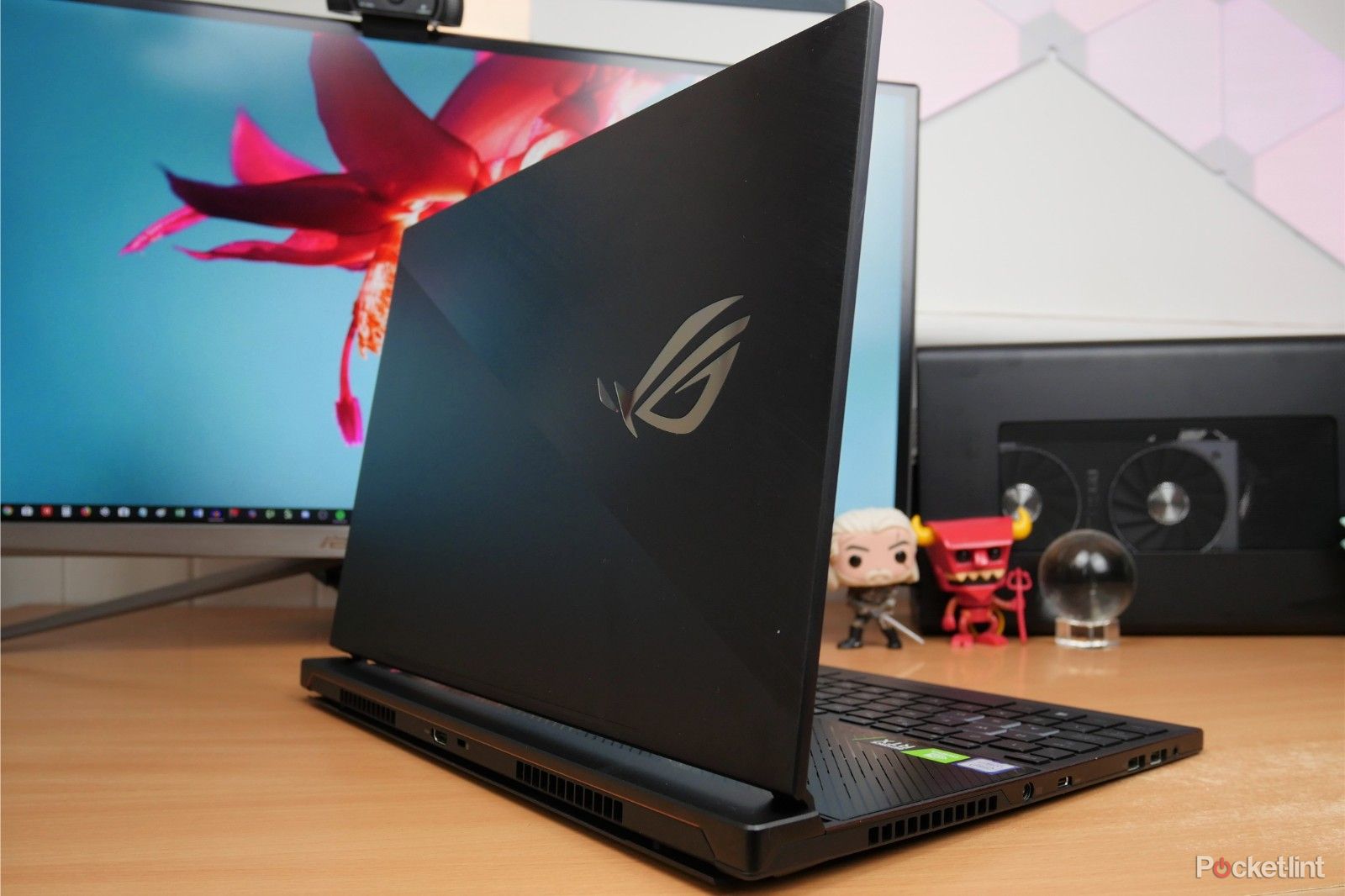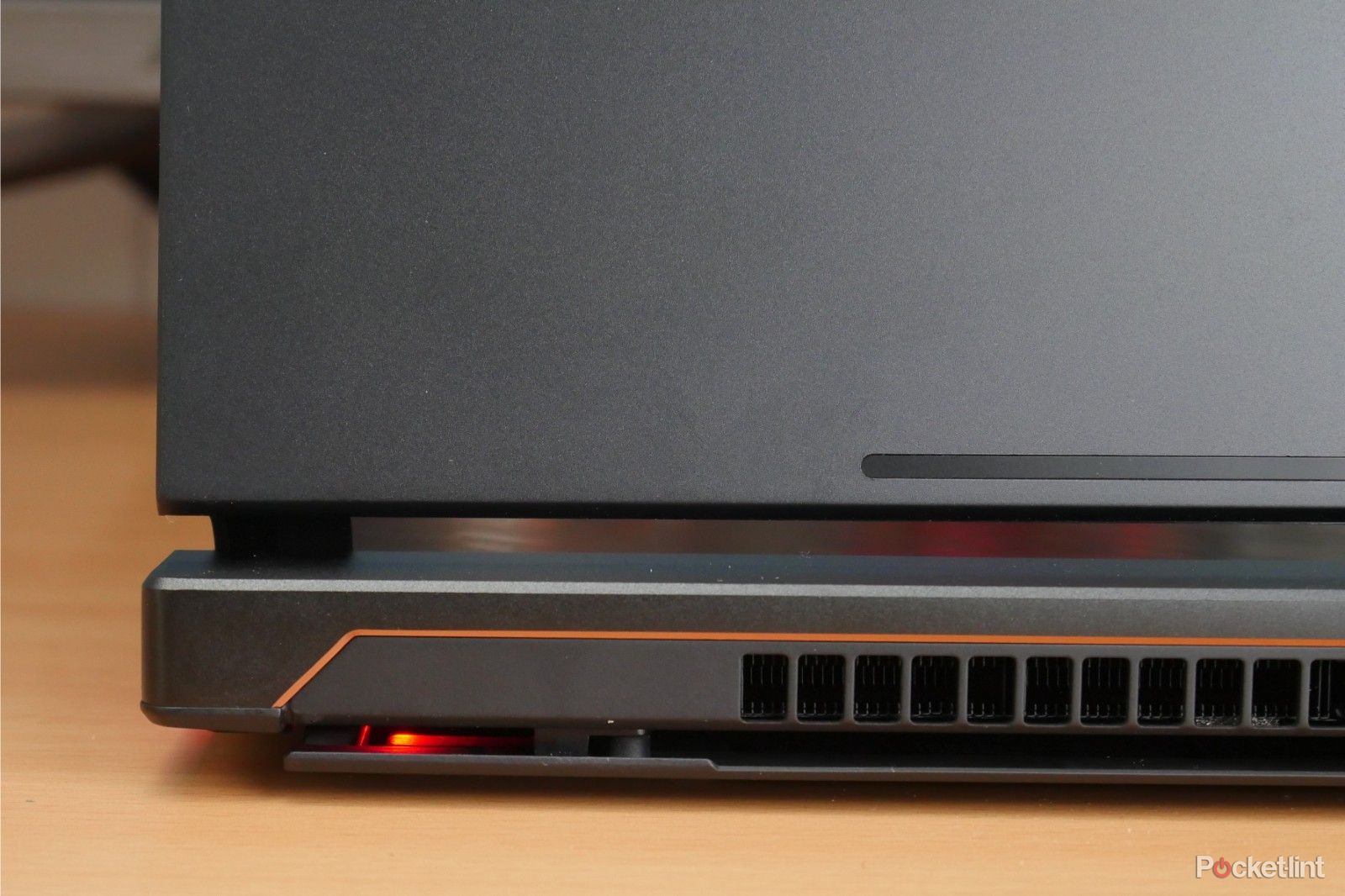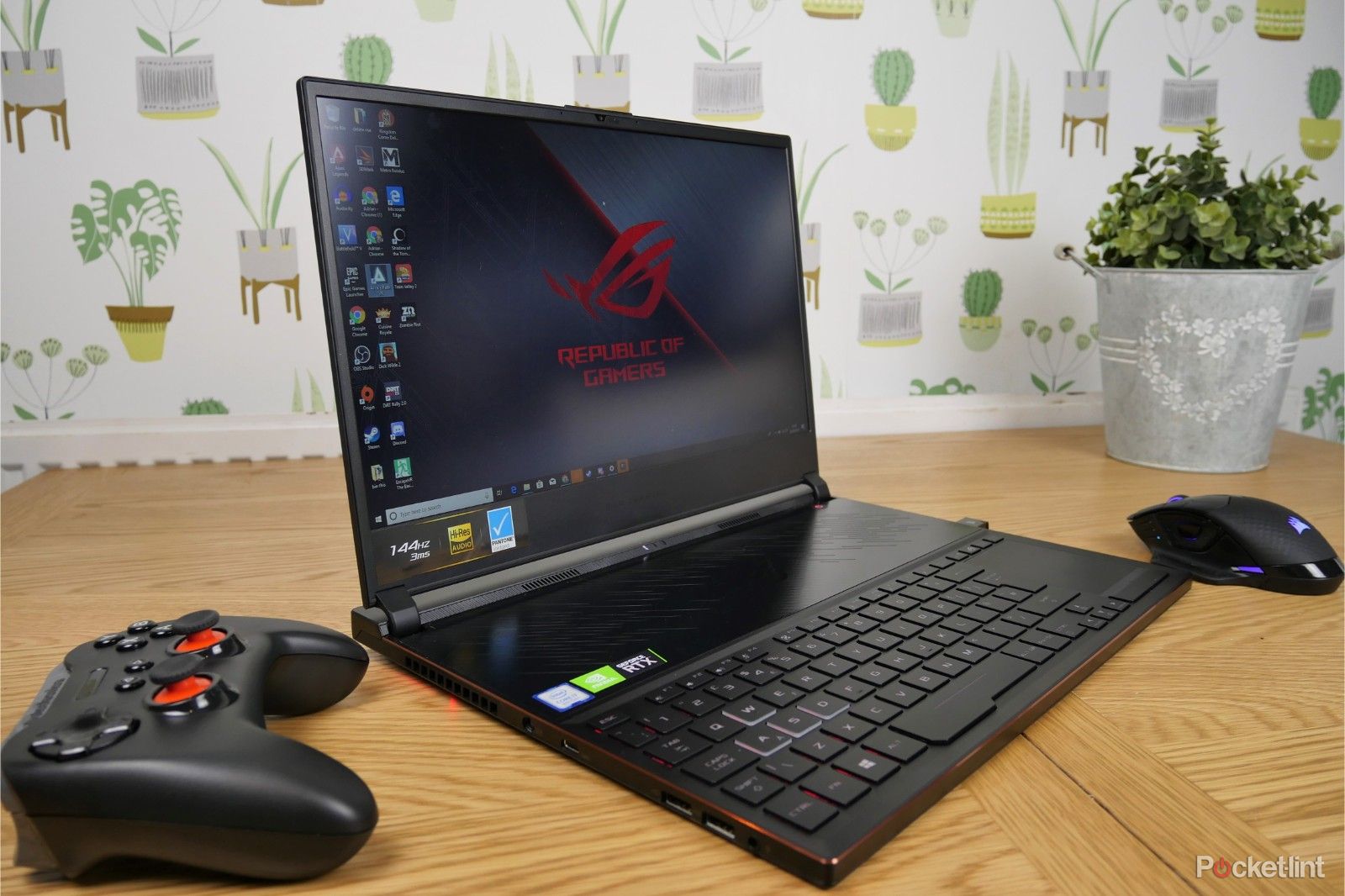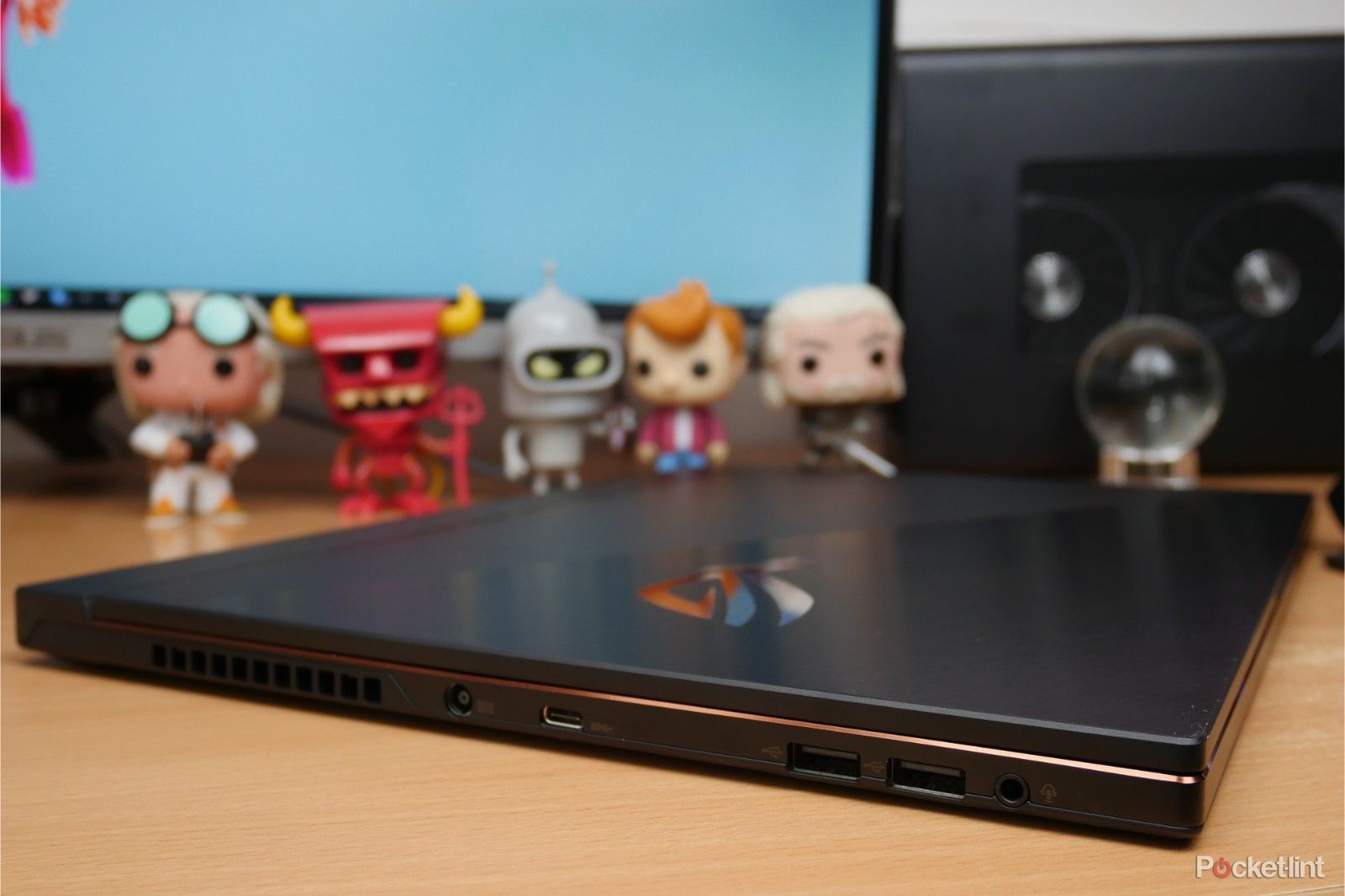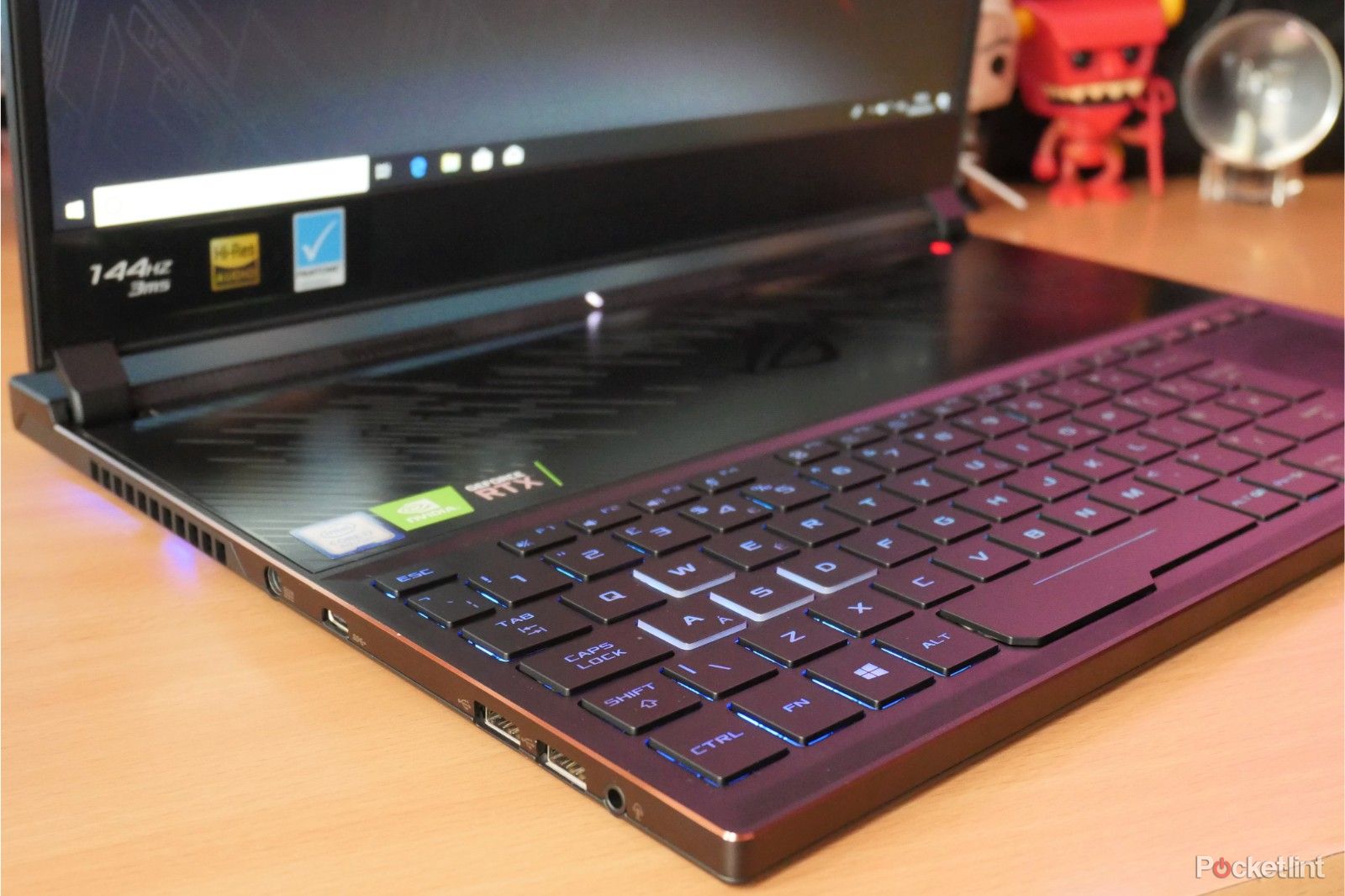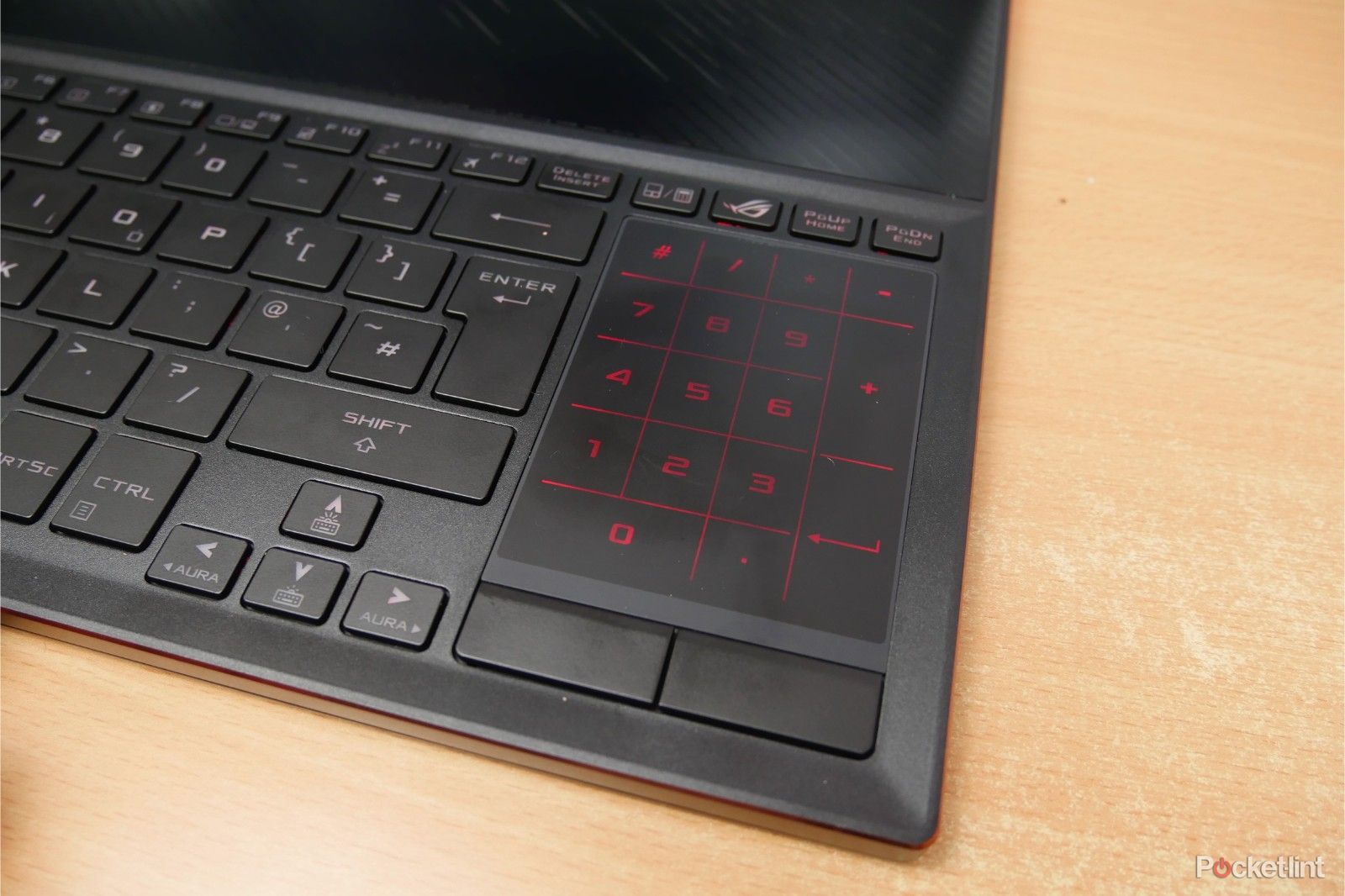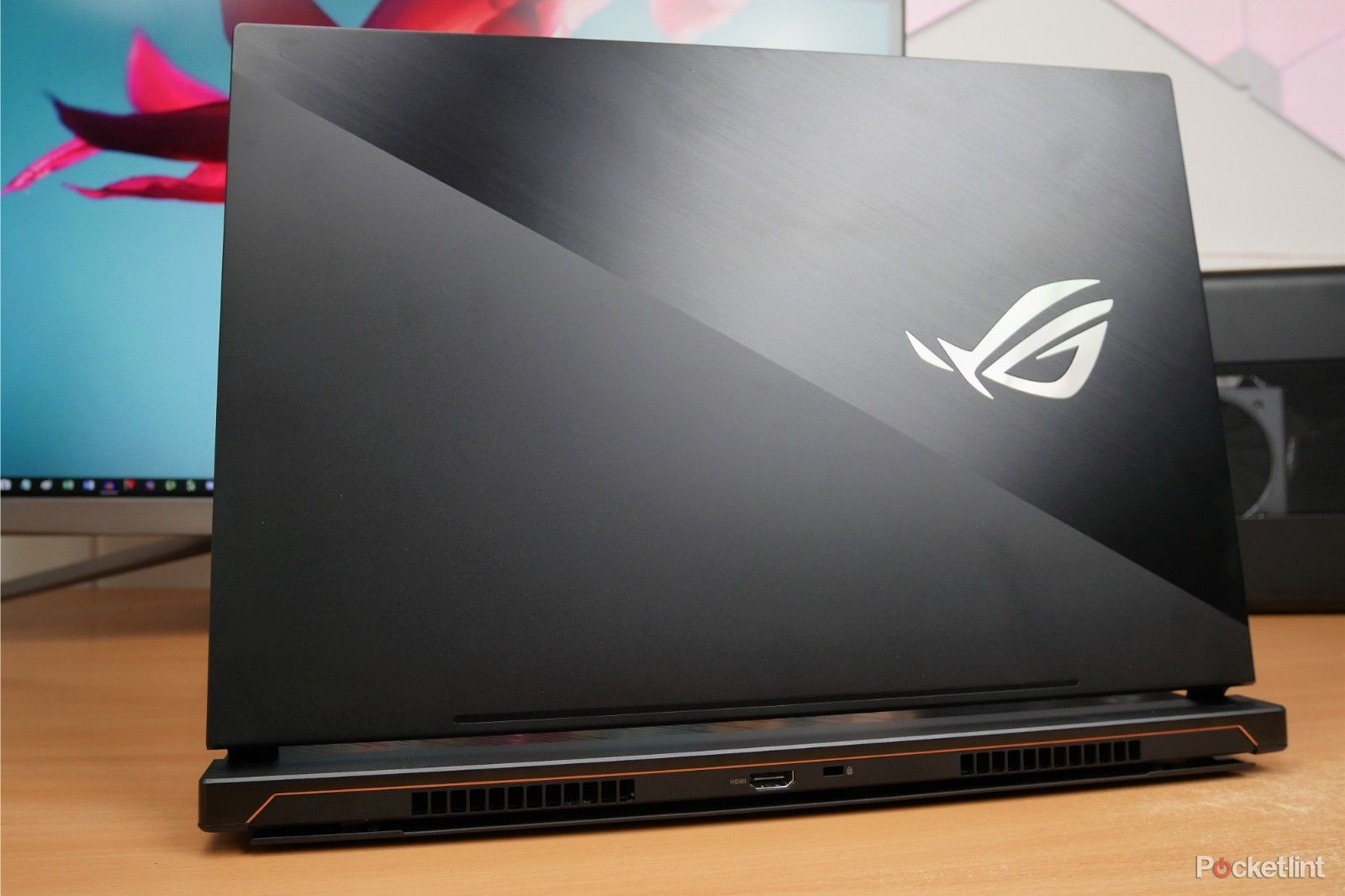There's an ongoing battle in the gaming laptop space to create the thinnest, most impressive and aesthetically pleasing devices. A series of Ultrabook-style laptops have appeared from the likes of MSI, Razer and more.
The Asus ROG Zephyrus S GX531 is the company's contender in this battle. We saw this device previously and it's now been updated with Nvidia's latest RTX graphics cards to deliver even more gaming prowess.
We've had this gaming laptop in the office for over two weeks to put it through the ringer with everyday work, gaming and benchmarking to bring your our thoughts. Does this ultra-thin, high-spec gaming laptop warrant the hefty price tag?
Our quick take
The Zephyrus S GX531 is the pinnacle of the Asus ROG laptop line-up, which shows in its balance of features, specs and design aesthetics.
It's not the best gaming laptop ever though. Some compromises have been made in order to make it one of the "thinnest" gaming laptops around. Battery life fails to impress, cooling is also a big niggle given the fan noise, and we have to question why there's only a 1080p panel at this price.
When plugged in - whether that's at your mate's house, in a hotel room or wherever you can't transport a desktop machine - it's powerful enough to run modern games on ultra settings at a decent frame rate and even work with VR devices. With an RTX graphics card it also runs compatible games with the full joy of ray-tracing goodness.
All this does come at a cost though, with prices reaching an eye-watering £3K for the RTX 2080 model we tested. Sad as we are to let it go back to its maker, that's a lot of cash to fork out for such a machine.
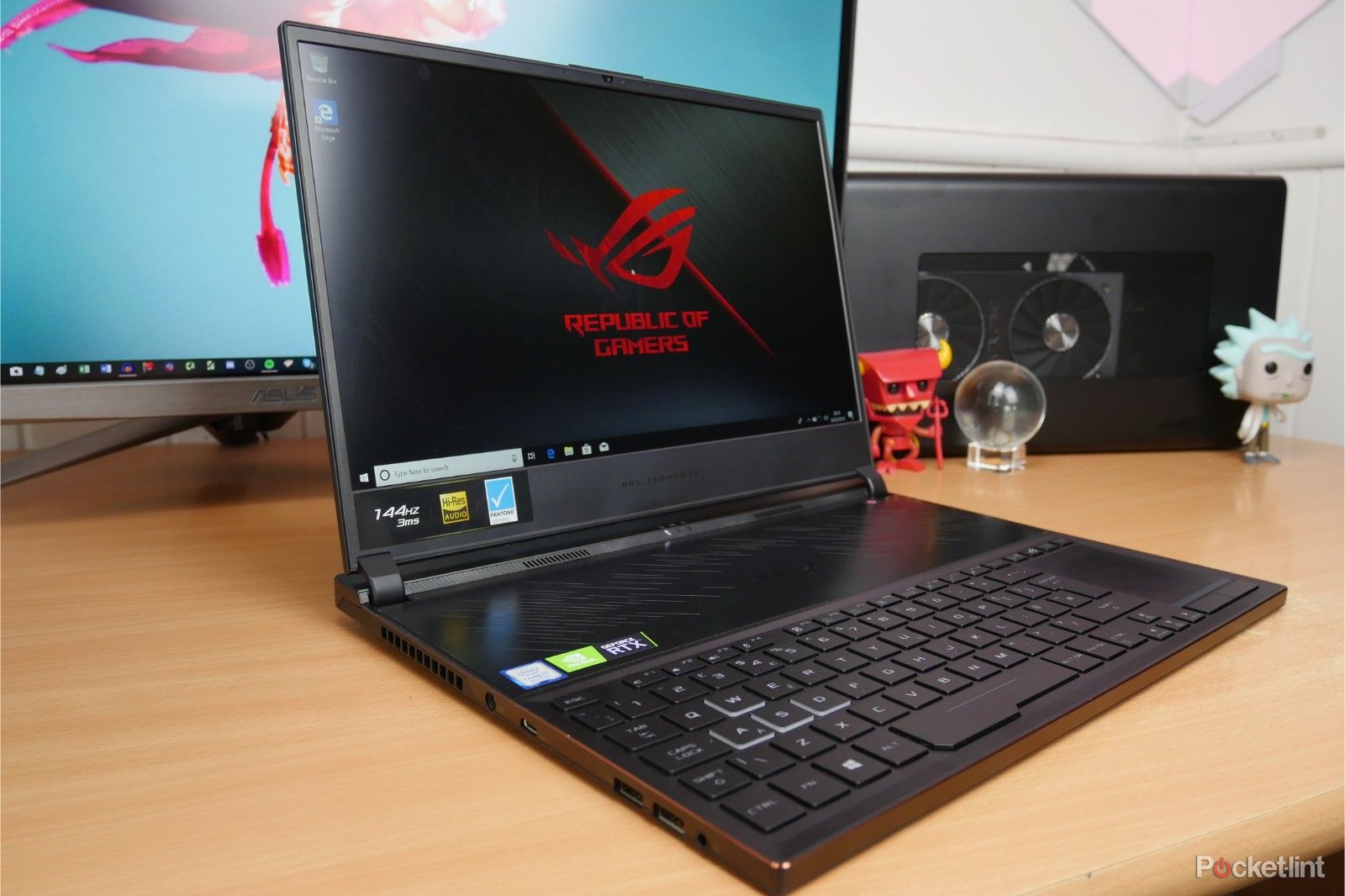
Asus ROG Zephyrus S GX531 with Nvidia RTX - 4.0 / 5
| FOR | AGAINST |
|---|---|
|
|
Asus ROG Zephyrus S GX531
High spec gaming in a slim and stylish package
- All-metal chassis with "military-grade" durability standards
- Active Aerodynamic System for cooling
- Intel Core i7-8750H CPU
- 16GB DDR4 2666MHz RAM (up to 24GB)
- NVMe storage options upto 1TB
- 802.11ac Gigabit Wi-Fi/Bluetooth 5.0
The ROG, as you can tell from the outline specs above, is a premium gaming product designed to deliver excellent gaming performance. There are different configurations available with a choice of GPU, storage and memory options - depending on your preference.
But it's much more than that too: this laptop has Ultrabook-style and wouldn't look out of place in the office or on the train, yet will still allow you to crush your enemies in the evening with a good gaming session.
The chassis of this laptop is CNC milled in a process that takes over an hour for each laptop alone. This device isn't made from a slab of metal that's pressed by a machine, instead it's lovingly crafted to be much more lightweight and robust. The machine is put through military-grade durability testing to ensure it can stand up to the everyday hustle and bustle. It's apparently designed to even withstand a drop from a height of just under a metre (760mm) - though that's not something we tested.
At a mere 15.35mm thick (a smidge larger than its GTX-powered predecessor), this new laptop weighs just 2.1kg - so it's easy to throw in a bag and take with you anywhere you need to go.
The body is smartly designed. Several design features include a nod towards the exquisite - without being too overboard. A subtle ROG logo here and there, funky looking scratch marks on top of the air intakes, a brushed aluminium-style finish on the body. The hinged door offers silky smooth opening and closing which oozes quality craftsmanship too.
The Asus ROG Zephyrus S GX531 boasts some other pretty clever design features. One example is the Active Aerodynamic System: this air venting works when you open the screen to avoid any area of the laptop's underside getting too hot when it's sat on your lap or desk. It's not a flawless system though: sometimes gaming on your lap seems to block the venting system and leads to the laptop getting toasty and rather noisy.
During testing we also found that pushing the laptop to its limits with Battlefield V and Metro Exodus on ultra settings with ray-tracing and related visuals turned on lead to quite a lot of noise. Fan speeds can be adjusted in the accompanying software, but on several occasions we found the fan noise levels to be verging on obnoxious. Not a problem if you've got a good gaming headset, but rather bothersome during untethered play.
Display visuals and settings
- Nvidia GeForce RTX 2060 6GB GPU/Nvidia GeForce RTX 2070 Max-Q GPU/Nvidia GeForce RTX 2080 8GB Max-Q GPU
- 15.6-inch 1080p IPS panel with a 144Hz refresh rate and 3ms response time
- 178-degree viewing angles, 100 per cent sRGB gamut, Pantone validated panel
- 3DMark benchmark scores: Sky Diver, Fire Strike, Time Spy, DLSS test, Port Royal
With ultra-thin bezels, Asus has managed to cram a 15.6-inch Full HD IPS panel into a compact chassis. The thin bezels manage to give the impression of a larger screen, but on a smaller laptop.
This screen also boasts a 144Hz refresh rate and 3ms response time, so it's more than capable for its gaming-focused task with that higher refresh rate. The screen has excellent viewing angles and an equally impressive colour range. It's also Pantone validated, so you can be sure you're getting the most accurate colours.
We can't help but wonder whether a 4K panel would be more worthy at this price though. After all, this is some serious money for a Full HD screen.
During use we thoroughly enjoyed being able to switch between visuals depending on what we were doing. Eyecare mode is easy on the eye for dealing with emails, spreadsheets and day-to-day writing; while the various gaming modes make the screen pop appropriately for whatever sort of game you're playing.
The machine tested here includes the Nvidia GeForce RTX 2080 Max-Q graphics processing unit. The latest and greatest of Nvidia's GPU line-up offers ray tracing, DLSS and DXR capabilities. If you want the very best visual experiences, this is theoretically where it's at.
We ran the machine through its paces by testing with Shadow of the Tomb Raider, Battlefield V, Apex Legends, Metro Exodus and more.
As a real-world show of what you'll be getting out of this machine: Battlefield V ran at around 80fps with DXR and DLSS enabled, as well as everything set to ultra and the screen tuned to 144Hz. It wasn't an entirely smooth experience though, with some dips in frame rates and jagged happenings along the way.
Of course, some of these issues may be down to the fact it's a new technology - you need the latest Windows 10 updates and Nvidia drivers to even access these settings in Battlefield, so that shows how cutting edge it is.
Metro Exodus, meanwhile, ran at around 50fps and upwards with these settings and Nvidia Hairworks on, as well as everything set to ultra. This game also saw some dips down to 20fps and lower at points or during intense battles with enemies or taxing scenes. If you like everything running pretty but also smoothly you might be better off splashing the cash on a full desktop system. That said, there's no denying the visuals are fantastic on this laptop's 144Hz screen.
Elsewhere, the Razer managed a much smoother experience with Dirt 2.0. Playing with everything set to ultra and 144Hz, we found this game looked stunning, ran well and sounded fantastic too. This game is probably one of the only games with enough audio insanity to drown out the cooling fans though - the pleasant sounds of rumbling and roaring engines soothing against the annoying whine of turbines.
Shadow of the Tomb Raider on ultra settings results in an average of 55fps. Nothing mindblowing, but at 144Hz, it's nothing to be sniffed at and certainly better than the scores we saw with the GTX 1070 version of this laptop.
We also put the machine through the wringer with a variety of 3D Mark benchmarks including the latest DLSS and Port Royal tests - which check the machine's capabilities with the newest graphical advancements. The Zephyrus S GX531 seemed to fare reasonably well too.
Max-Q GPUs allow for powerful graphics processing with a slim form factor - which is how Asus has managed to cram all that power into the thin frame of this laptop. The trade-off is certainly in cooling and the associated fan noise as a result. Of course, you can switch between cooling modes - including Balanced, Silent and Turbo - on the fly, but doing so obviously depends on what you're tasking the machine with doing. Keeping the system cool is obviously important for performance, but you don't want your gaming sessions ruined by excessive white noise.
Compatibility and outputs
- 1x USB 3.1 Gen 2 Type-C port with DisplayPort 1.2 and Power Delivery
- 1x USB 3.1 Gen 1 Type-C port
- 1x USB 3.1 Gen 2 Type-A port
- 2x USB 2.0 Type-A ports
- Full-size HDMI out
- 3.5mm headphone and microphone combo jack and 2 x 2W speakers
As well as an impressive screen, the Zephyrus S features dual front-facing speakers with smart-amplifier technology and virtual surround-sound capabilities. If you're not one for blasting your tunes or gaming sounds out loud then there's a 3.5mm headphone jack and a multitude of USB ports for your favourite gaming headset.
The laptop's built-in microphone picks up a lot of the fan noise and broadcasts over recorded or streamed videos or over Discord when you're playing with friends. So any serious gamer will need a decent headset and mic to not annoy their chums.
The Zephyrus S GX531 is capable of powering other screens too. An HDMI 2.0 port located to the rear of the laptop is capable of outputting 4K 60Hz visuals to another display. Using this output we found the laptop was able to comfortably handle the duplicating or extending of the display to another monitor.
We hooked up a 34-inch 3440 x 1440p ultra-wide monitor running at 60Hz and still managed to get decent frame-rates in our favourite games. Obviously outputting this way is more taxing and the experience isn't as smooth as it is on the PC itself, but it may have its uses.
As well as the HDMI output there are USB ports on both left and right sides. We've been able to run an Oculus Rift on this laptop during testing. One of the USB-C ports is also DisplayPort capable, meaning you can hook up an external screen that way as well.
Wi-Fi capabilities are strong too. With 802.11ac Gigabit Wi-Fi and two antennae, the Zephyrus S manages to supply a strong signal. There is the lack of Ethernet though - so it's Wi-Fi or nothing, which we found a bit surprising on a serious gaming laptop. No doubt another necessary evil of the ultra-thin design and something that could be recitified with an adapter.
Keyboard-forward layout and a hot-switch numpad
- Backlit Chiclet Keyboard with stand-out WASD keys
- Keyboard-forward layout with Overstroke technology
- 1.2mm of travel, N-key rollover with durable switches for up to 20 million key presses
- Four RGB lighting zones with Aura Sync capabilities
The keyboard-forward layout of the Zephyrus S is interesting and surprisingly comfortable. The intake fans on the top of the laptop necessitate this design and it actually works really well. The keys are comfortable to type on and respond accurately during gameplay too. They're obviously not mechanical and they don't need to be.
RGB backlighting on the keys can be turned on/off and adjusted (even by section) using function keys built into the directional buttons. When the laptop is open, there's some subtle RGB light bleed from the rear where the air flow zone opens up. All this lighting is Aura Sync capable - meaning it can be paired with other Asus peripherals too. Of course, you can turn this off if you're in the office and worry about what your coworkers will think.
You'll also note that the trackpad isn't in the usual place either, but instead sits on the right-hand edge. This is actually a design feature we like a lot as its placement makes it more like a normal mouse position and it gets in the way less when you're typing.
The trackpad also doubles as a touchscreen numpad. A simple button press backlights this part of the keyboard and allows you to punch in numbers when you need to. Another feature that we feel is pretty handy, especially when switching from gaming mode to everyday office use. There is no tactile response though, so you do need to look to see what buttons you're pressing.
Of course, it's still a trackpad and is fairly narrow, so it's not up to much in terms of gaming capabilities and there's no DPI switching to improve it either. You really need a good gaming mouse as an additional peripheral.
Software and battery life
- ROG Armoury software for customisation and tweaking
- Compatible smartphone app for remote control
All the customisable action happens in the ROG Armoury software, which is the command centre used to tweak the device to your pleasure. Everything from keyboard illumination to fan speed, screen visuals (fps, eye care, RTS, default), screen overdrive for 144hz and more. You can setup profiles to switch between depending on what you're doing, the type of game you're playing or just your preferred performance mode.
As if that wasn't enough, there's also an accompanying smartphone app for Android and iPhone devices that allows you to control the laptop from your phone. Fast switching between settings from your phone means you don't have to leave your game to adjust settings within different Windows, which is a nice touch.
Battery life is another matter. Obviously, this is a high-end gaming device with a lot cooking under the hood, thus we found it wasn't up to much in terms of battery-powered use. How long the battery lasts obviously varies wildly depending on what you're doing. We managed to binge watch Netflix for four hours before draining it, but that was with screen brightness down low, keyboard lighting off and the volume low.
Gaming is a different beast though - and it's basically essential this laptop remains plugged in. If the ROG isn't getting enough juice then the graphics processor cannot run at full tilt, which makes taxing games like Battlefield V and Metro Exodus basically unplayable.
We did, however, manage to run more casual games (like Train Valley 2) with a smooth 60fps - but the battery drained within an hour. Not necessarily a problem, unless you were hoping to use it to play high-end games on the train during your daily commute. We've had similar experiences with the GTX 1070 powered version of this laptop, so it's not surprising to see it here too.
Another point of note is load times. Despite the apparent M.2 NVMe SSD drive, game load times appear slow in several instances where we've seen them faster in other similar-spec machines. Not enough to niggle but worth mentioning.
Asus ROG Zephyrus S GX531
To recap
The Zephyrus S GX531 is the pinnacle of the Asus ROG laptop line-up. It's beautiful and a joy to use – but the battery life means it's barely a portable machine and the asking price is fairly massive too.

